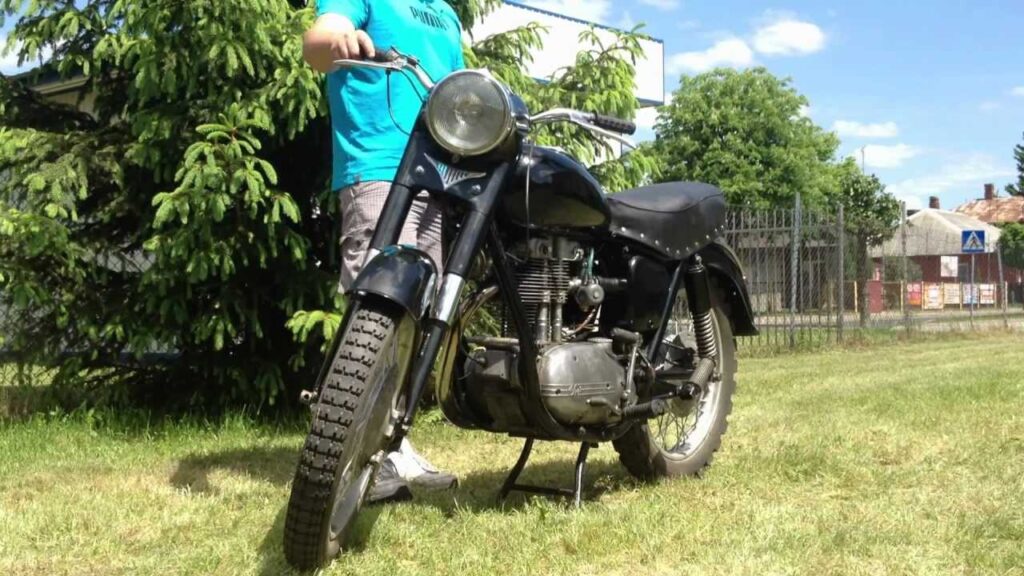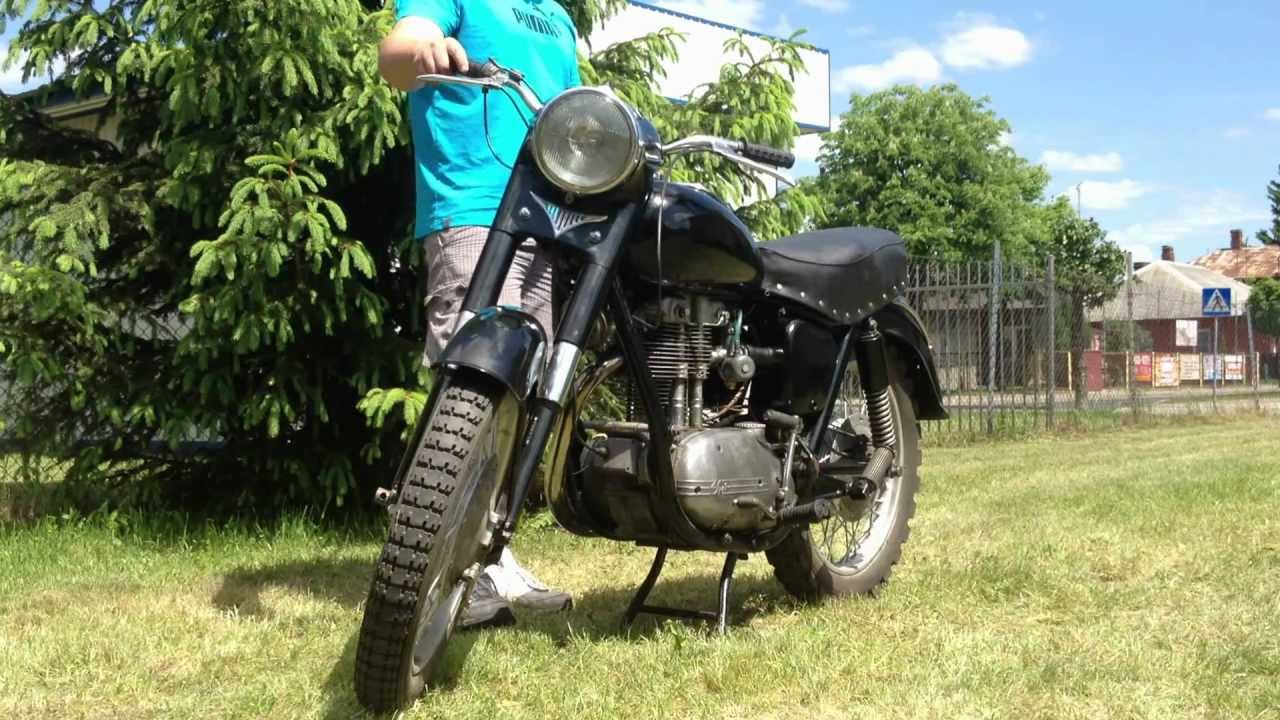
Polish Motorcycle Industry: A History of Innovation and Resilience
The story of the Polish motorcycle industry is one of innovation, resilience, and adaptation. From its humble beginnings in the interwar period to its post-World War II resurgence and eventual integration into the global market, Polish motorcycle manufacturers have consistently demonstrated a commitment to engineering excellence and design. This article explores the key milestones, iconic models, and challenges faced by the Polish motorcycle industry, offering a comprehensive overview of its rich history and enduring legacy.
Early Beginnings: The Interwar Period
The seeds of the Polish motorcycle industry were sown in the 1920s and 1930s, a period of rapid industrialization and technological advancement in Poland. Several small workshops and factories began experimenting with motorcycle production, often based on foreign designs or under license agreements. These early efforts laid the groundwork for more ambitious ventures in the years to come.
One of the pioneers was the Sokół motorcycle, produced by PZInż (Państwowe Zakłady Inżynieryjne – State Engineering Works). The Sokół, meaning “Falcon” in Polish, quickly gained popularity for its robust construction and reliable performance. Several models were produced, including the Sokół 1000, a heavy touring motorcycle that became a symbol of Polish engineering prowess. The Sokół motorcycles were not just recreational vehicles; they also served in the Polish army, highlighting their durability and adaptability.
Post-War Reconstruction and the Rise of WSK and WFM
World War II devastated Poland’s industrial infrastructure, but the post-war period saw a determined effort to rebuild and modernize the country. The Polish motorcycle industry played a crucial role in this reconstruction, providing affordable and practical transportation for the masses. Two manufacturers emerged as dominant players: WSK (Wytwórnia Sprzętu Komunikacyjnego – Communication Equipment Factory) and WFM (Warszawska Fabryka Motocykli – Warsaw Motorcycle Factory).
WSK, based in Świdnik, became famous for its lightweight motorcycles and mopeds. Models like the WSK M06, known for its simplicity and affordability, became ubiquitous on Polish roads. These motorcycles were designed for everyday use, providing reliable transportation for workers, farmers, and students. The WSK brand became synonymous with practicality and accessibility, making it a household name across Poland.
WFM, on the other hand, focused on producing slightly larger and more sophisticated motorcycles. The WFM M06, for example, offered a more comfortable riding experience and improved performance compared to its WSK counterparts. WFM motorcycles were often seen as a step up from the basic WSK models, appealing to riders who wanted a bit more power and refinement. Both WSK and WFM contributed significantly to meeting the transportation needs of the Polish population during the post-war era.
The Junak: A Polish Heavyweight
While WSK and WFM catered to the lower end of the market, the Junak motorcycle aimed to challenge the dominance of foreign manufacturers in the heavyweight category. Produced by SFM (Szczecińska Fabryka Motocykli – Szczecin Motorcycle Factory), the Junak was a robust and powerful machine that quickly gained a loyal following. Its distinctive styling and powerful engine made it a popular choice for long-distance touring and even motorcycle racing.
The Junak was inspired by the German DKW motorcycles, but it featured several unique design elements that set it apart. Its robust frame, powerful single-cylinder engine, and distinctive exhaust note made it a memorable machine. Despite its popularity, the Junak faced production challenges and was eventually discontinued in the mid-1960s. However, it remains a beloved icon of Polish motorcycle history, with restored examples commanding high prices among collectors.
The Rise and Fall of Komar and Other Mopeds
In addition to motorcycles, Poland also produced a range of mopeds that proved immensely popular, particularly among younger riders. The Komar moped, manufactured by ZZR (Zjednoczone Zakłady Rowerowe – United Bicycle Factories), became a symbol of youthful freedom and mobility. Its simple design, ease of use, and affordability made it a hit with teenagers and young adults.
The Komar moped was available in several variants, each offering slightly different features and styling. Its lightweight frame, small engine, and pedal-assist function made it ideal for navigating urban streets and rural roads. The Komar moped played a significant role in popularizing two-wheeled transportation in Poland, paving the way for future generations of motorcyclists.
Besides Komar, other moped brands such as Ryś and Pony also emerged, each offering their own unique take on the moped concept. These mopeds were often more stylish and feature-rich than the basic Komar model, appealing to riders who wanted a bit more flair. However, the Komar remained the most iconic and widely recognized moped brand in Poland.
Challenges and Decline in the Late 20th Century
The Polish motorcycle industry faced increasing challenges in the late 20th century. Economic stagnation, outdated technology, and competition from foreign manufacturers took their toll. Many Polish motorcycle factories struggled to adapt to the changing market conditions, leading to declining production and eventual closure.
The transition to a market economy in the 1990s brought further challenges. Polish motorcycle manufacturers faced stiff competition from established international brands that offered more advanced technology and better quality. Many Polish factories were unable to compete effectively, leading to a sharp decline in domestic motorcycle production.
The Modern Era: Adaptation and Niche Markets
Despite the challenges, the Polish motorcycle industry has shown remarkable resilience in the modern era. Several small workshops and custom builders have emerged, focusing on niche markets and specialized motorcycle designs. These builders often draw inspiration from classic Polish motorcycles, creating modern interpretations of iconic models.
One notable trend is the restoration and modification of vintage Polish motorcycles. Enthusiasts are restoring classic WSKs, WFMs, and Junaks to their former glory, preserving the heritage of the Polish motorcycle industry. Others are modifying these motorcycles, adding modern components and technology to create unique and personalized machines.
Another area of growth is the production of electric motorcycles. Several Polish companies are developing electric motorcycles that offer a sustainable and environmentally friendly alternative to traditional gasoline-powered machines. These electric motorcycles are gaining popularity among urban commuters and environmentally conscious riders.
Iconic Polish Motorcycle Models
Several Polish motorcycle models have achieved iconic status over the years. These motorcycles represent the best of Polish engineering and design, and they continue to inspire enthusiasts and collectors today. Here are a few notable examples:
- Sokół 1000: A heavy touring motorcycle that symbolized Polish engineering prowess in the interwar period.
- WSK M06: A simple and affordable motorcycle that became ubiquitous on Polish roads after World War II.
- WFM M06: A slightly larger and more sophisticated motorcycle that offered improved performance and comfort.
- Junak: A robust and powerful motorcycle that challenged the dominance of foreign manufacturers in the heavyweight category.
- Komar: A moped that became a symbol of youthful freedom and mobility in Poland.
The Future of Polish Motorcycles
The future of the Polish motorcycle industry is uncertain, but there are reasons to be optimistic. The growing interest in vintage motorcycles, the emergence of custom builders, and the development of electric motorcycles all point to a potential resurgence. With continued innovation and investment, the Polish motorcycle industry could once again play a significant role in the global market.
The legacy of the Polish motorcycle industry is one of innovation, resilience, and adaptation. From its humble beginnings to its post-war resurgence and eventual integration into the global market, Polish motorcycle manufacturers have consistently demonstrated a commitment to engineering excellence and design. The story of Polish motorcycle manufacturing is a testament to the ingenuity and determination of the Polish people. Despite facing numerous challenges, the industry has persevered, leaving a lasting mark on the history of transportation and engineering.
The future may hold new opportunities for growth and innovation, especially in the areas of electric mobility and custom motorcycle building. By embracing new technologies and catering to niche markets, the Polish motorcycle industry can continue to thrive and contribute to the global motorcycle community. The enduring appeal of classic Polish motorcycle models ensures that their legacy will continue to inspire future generations of riders and engineers. [See also: History of European Motorcycles] [See also: Electric Motorcycle Technology]

